The Waseca County Historical Society was organized on February 26, 1938, in the court chambers of the Honorable Fred Senn at the Waseca County Courthouse with 18 charter members. Herman Panzram was elected president and re-elected to that office three more times, serving until 1941. Martha Cummings was vice president, Charles Bailer was treasurer and Robert Hodgson was secretary. Other directors were Dana Wobschall, Judge Senn and Mrs. F.A. Wood. The remaining charter members included Arthur Brisbane, Albert Bartelt, R.T. Barry, L.H. Brandvold, W.A. Clement, J.P. Coughlin, Jean Latham Day, G.P. Madden, Norman Peterson, Arnold Runnerstrom, F.A. Wood, Pansy Panzram, and Mrs. R. Percy Ward.
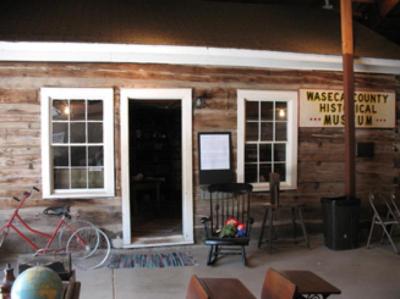
Log Cabin located inside Hodgson Hall at the Waseca County Fairgrounds.
This log cabin is a replica of the one presented by John Oleson, Pioneer soldier and citizen of Waseca County, as his memorial to the Waseca County Historical Society. This cabin was originally built in 1862 on a farm in New Richland Township.
Early artifact donations were exhibited in space in the basement of the courthouse. In 1940, John Oleson, sole surviving Civil War veteran in Waseca County, donated original hand-hewn logs from a cabin on his property and the A.F. Sponberg family of Otisco Township also donated original hand-hewn logs from a cabin that was built in 1858 by Samuel Anderson, a very early Waseca County settler. The cabins were dismantled and transported to the courthouse grounds where the best of the logs were used and one cabin was reconstructed as a pioneer dwelling on the lawn of the courthouse. A block annex was built behind the courthouse to accommodate the growing collection of the society, but it proved to be inadequate space. By the mid-fifties the society was in need of more space and the county needed the area to expand. The cabin was moved to the Waseca County fairgrounds and enclosed in a cement block building dedicated as Hodgson Hall.
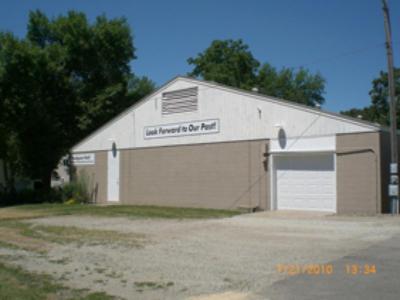
South side of Hodgson Hall located on the West side of the Waseca County Fairgrounds.
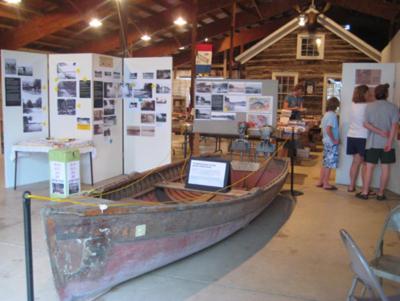
Interior of Hodgson Hall.
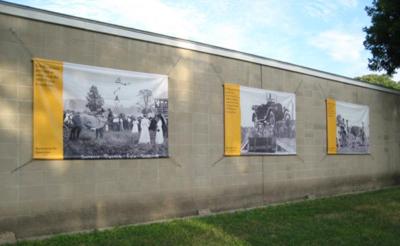
Banners on the west side of Hodgson Hall.
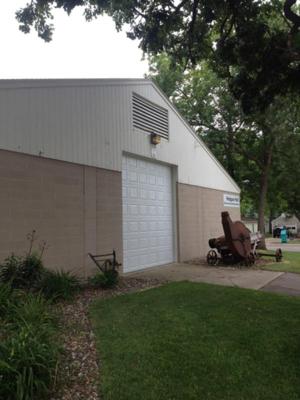
North side of Hodgson Hall.
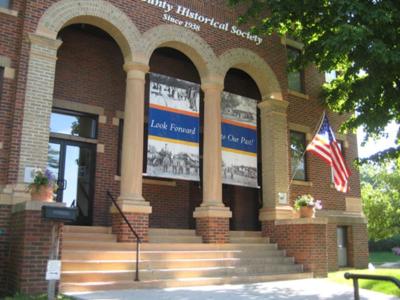
Waseca Historical Society
Former Waseca Methodist Episcopal Church
The Methodist Episcopal Church began when two early Waseca churches united. The German speaking M.E. Church was organized in the county in 1858 with Rev. Frank Grechsenmeyer. Their church building was constructed in 1875. The English speaking M.E. Church met at the Odd Fellows Hall at Wilton in 1866, with Rev. W.M. Satterlee, who served the Clear Lake Mission at Woodville. Their church was built in 1877 at Elm Avenue and Fifth Street. The church was destroyed by fire on Christmas Eve, 1879. Services were held in the Congregational Church until the church was rebuilt in 1880. The second church burned in January 1917. The public school bought the site and a new church was built at Fourth Street and Second Avenue. In 1923, Mrs. J.B. Dye donated some chimes and then a tower was erected for the chimes. In 1920, the German and English church members united as the English M.E. Church. When a new church building was built at Eighth Street and Fourth Avenue Northeast (801 Fourth Avenue) in 1962, Edgar Johnson, his brothers and families bought the building for use as the Waseca County Historical Museum. In 1964, the families of Edgar, Everett and Marvin Johnson had the Methodist Episcopal Church at 2nd Avenue and 4th Street N.E. in Waseca renovated, donated and officially dedicated as the county's museum.
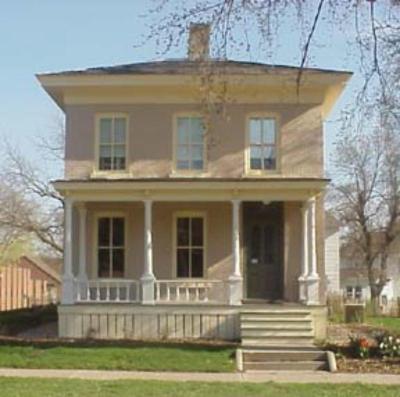
The Bailey-Lewer House
Waseca County Historical Society Research Center
The Bailey House is one of Waseca's oldest homes built in 1868, as Waseca County was being settled. Originally built by Dayton Smith, an accused horse thief, it was acquired in 1872, by P.C. Bailey, a hardware merchant, county official and director of the first committee to build a school in Waseca. P.C. Bailey died in 1907, and the house was purchased by the E.W. Lewer family who owned it until 1991. In 1991, the Waseca County Historical Society acquired the house along with a generous donation from the Lewer family. The house was placed on the National Historic Register in 1994.
In 1997, a $30,000 grant was secured from the Minnesota Historical Society Grants program and matched by public funds and volunteer labor. In addition, an award of $1,500 was donated by the Jim Corchran Waseca Beautification Fund, and used for a portion of the landscaping. Restoration was undertaken by a crew of Waseca County Historical Society members and volunteers, principally, George Kastelle, Don Wynnemer, Jerry Rutledge, Keith Smith, Richard Markus, Rod Searle and Phil Allen. Over a period of three years the house was completely gutted and lovingly restored from the inside out. Other workers and volunteers painted, papered, refinished, wired, plumbed and landscaped to bring the building back to life and service to the Waseca County community! The renovation of the Bailey-Lewer House was completed in April 2000, and designated as the Research Center for the Waseca County Historical Society.